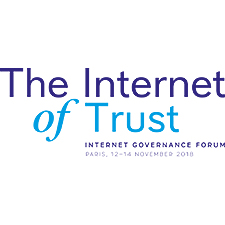Fostering digital social innovation in the global south
13 Nov 2018 16:45h - 18:15h
Event report
[Read more session reports and live updates from the 13th Internet Governance Forum]
Ms Janis Gerlach, Senior Public Policy Manager at the Wikimedia Foundation, which hosts and supports Wikipedia, moderated the session. He welcomed participants to introduce themselves and explained that the workshop was co-organised by Sandra Cortesi, Youth and Media Manager at the Berkman Klein Center for Internet & Society, Harvard University. She explained that youth innovation was different from mainstream innovation in the sense that youth were digital natives and that many had different ideas from their parents. For example, they created new ways of doing things in apps like Snapchat.
Among those in the room were hackers, app developers, policymakers, professors, offline network distributors, youth researchers, media researchers and public officials. There was good representation from global south institutions such as AFRINIC, the regional Internet registry for Africa as well as organisations in the Caribbean and Asia.
Mr Christian Fieseler, Professor for Communication Management at BI Norwegian Business School, introduced digital social innovation as creating bottom up solutions through empowering people to resolve their own problems. He gave examples of technological solutions in favelas in Brazil, information solutions to farmers in Africa and also skill-building for people who have ideas. Examples of these skills included prototyping ideas and scaling them to production and making a profit. He also linked the notion of digital solutions to other aspects of the sustainable development goals (SDGs) such as inclusion and taking care of the environment. He also spoke of new technologies such as artificial intelligence and provoked participants to envision how these could help to achieve the SDGs. For there to be digital innovation, Fieseler stated, there was a need to ensure that global south actors were creators as opposed to mere consumers of technology.
Mr Pindar Wong, Chairman of VeriFi (Hong Kong) Ltd, a discrete Internet financial infrastructure consultancy, spoke about the opportunities provided by cryptocurrencies and blockchain. He said that in the past, communication was hinged on cost based on distance, but with the Internet, the correlation between cost and distance was increasingly blurred. He also explained that data meant money and demystified the myth that centralised security was the most secure form.
In discussion about markets versus commons, he viewed cryptocurrencies as a hybrid of both. He explained how over 2 000 cryptocurrencies provided incentives for digital work and predicted that with more innovation, cryptocurrencies would be a disruptive force even in the global south.
Mr Jorge Vargas, introduced Wikimedia Foundation, the organisation that supports Wikipedia, among other knowledge solutions. Wikipedia is an online encyclopedia whose content is uploaded by volunteers around the world. It currently has over 300 languages, inline with their vision of every person being able to freely share their knowledge. It started in 2001 and has grown to over 45 million articles. He described Wikimedia as a social movement and viewed it as a tool for digital social innovation that responds to issues such as inclusion and innovation in the global south. By getting people to curate content that was relevant to them, Wikimedia could contribute to the SDGs by recording knowledge, even of currently unrepresented societies.
He also highlighted barriers to free knowledge such as content restrictions in some countries, copyright controls and biases. To demonstrate this, he narrated a research project where over 80% of people in global south countries were not aware of Wikipedia, compared to only less than 20% in the global north. Wikipedia was working with local partners, for example in Nigeria, to increase local content and knowledge on their platform.
Interventions from the audience included a discussion on creation of content in places where literacy was low. Taking a market approach to digital social innovation as opposed to a commons approach was also discussed, with participants questioning the proper role of government in fostering digital social innovation. Where a social approach was taken, participants agreed that sustainability was always an issue. For example, if a donor funded innovation, there should be mechanisms to transmit the innovation to the market and ensure that it continued even after donor funds ran out.
Others also cited low Internet access in Africa, where only about 20% of the population is connected, as a barrier to digital innovation. It was however acknowledged that there was latent knowledge in the global south and one problem was transforming this resource into money.
Additionally, participants discussed barriers to digital inclusion for those already connected. A Ugandan narrated how the social media tax was a hindrance to creativity on the Internet. It was instead limiting people to consuming content when they could afford it.
In conclusion, participants were urged to rethink the idea of markets and market driven solutions as the only motive for innovation. Drawing from the history of the Internet, it was also possible to innovate for social development. Hence, a balance was needed between market and social incentives, and this in itself was innovation. Digital inclusion should not only include creating new things but also sharing ideas and processes.
By Grace Mutung’u
Related topics
Related event

